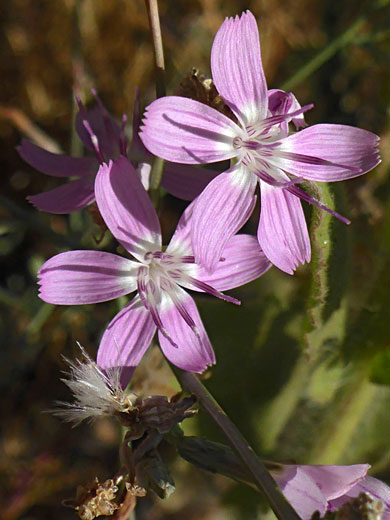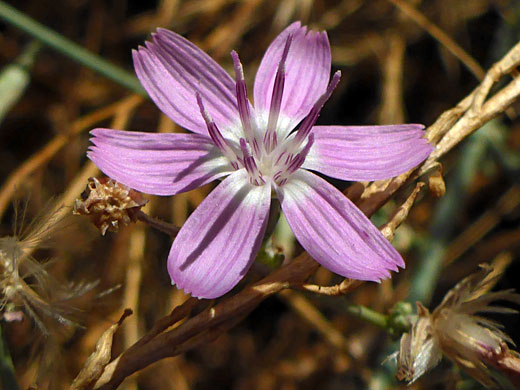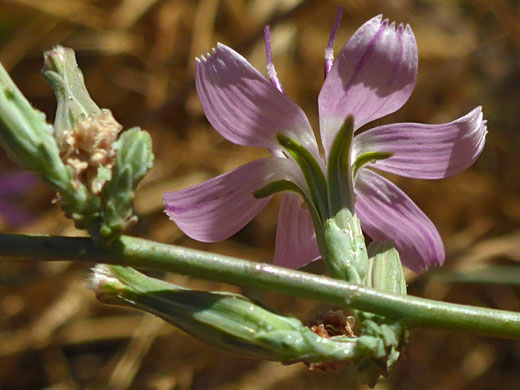Common names:
Rod wirelettuce, virgate wirelettuce
Family:
Scientific name:
Stephanomeria virgata
Main flower color:
Range:
California, southwest Oregon, south Arizona and small areas of Nevada
Height:
Up to 6 feet
Habitat:
Grassland, chaparral; up to 5,500 feet
Leaves:
Linear to narrowly oblanceolate; basal, and alternate along the stem. Basal leaves are shallowly lobed
Season:
June to October
Stephanomeria virgata, an annual, is a tall species, and generally hairless; occasionally sparsely tomentose. Plants produce one stem, branching a few times, with flowerheads at intervals - solitary (usually) or in small groups - along the upper ends of the branches, which are rigid, and ascending. Stems are lined with small, bract-like leaves; the larger basal leaves wither before flowering.
Flowerheads are attached by short stalks, around a third of an inch. The involucre is cylindrical, with two series of phyllaries, the outer ovate, about a quarter of the length as the lanceolate inner series, the tips of which are recurved. The ligulate florets (between five and nine) are pale pink or nearly white, all-white towards the base.
Two subspecies are ssp pleurocarpa, for which the outer phyllaries are also recurved, and florets number eight or nine; found in coastal regions of southern California, and the more widespread ssp virgata, with appressed outer phyllaries, and five or six florets.
Flowerheads are attached by short stalks, around a third of an inch. The involucre is cylindrical, with two series of phyllaries, the outer ovate, about a quarter of the length as the lanceolate inner series, the tips of which are recurved. The ligulate florets (between five and nine) are pale pink or nearly white, all-white towards the base.
Two subspecies are ssp pleurocarpa, for which the outer phyllaries are also recurved, and florets number eight or nine; found in coastal regions of southern California, and the more widespread ssp virgata, with appressed outer phyllaries, and five or six florets.
All Contents © Copyright The American Southwest | Comments and Questions | Contribute | Site Map





